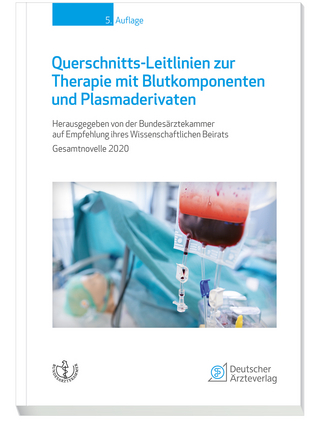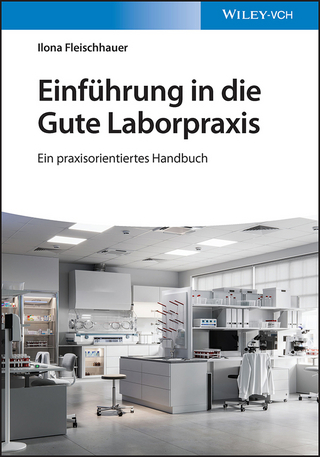
The Foundations of Laboratory Safety
Springer-Verlag New York Inc.
978-0-387-97125-4 (ISBN)
- Titel ist leider vergriffen;
keine Neuauflage - Artikel merken
1 Basic Principles of Laboratory Safety.- 1 Safe Laboratory Techniques.- Pipets.- Syringes and Needles.- Centrifuging.- Blenders, Ultrasonic Disruptors, Grinders, and Lyophilizers.- Water Baths.- Cold Storage.- Ampoules.- Shaking Machines.- Laboratory Sterilizers.- Harvesting Cultures.- Laboratory Vacuum.- Glass and Glassware.- Controlling Aerosols.- 2 Protective Clothing and Personal Equipment.- Selecting Personal Protective Equipment.- Laboratory Clothing.- Gloves,Shoes, and Aprons.- Face Protection.- Eye Protection.- Hearing Protection.- 3 Safe Personal Habits and Practices.- Personal Habits.- Personal Practices.- 4 Housekeeping Procedures.- General Principles.- Floor Care.- Vacuum Cleaner Use.- Selection of a Cleaning Solution.- Insect Control.- 5 Principles of Decontamination and Sterilization.- General Principles.- Heat Sterilization.- Decontamination with Chemical Disinfectants.- Examples of Chemical Disinfectants.- Precautions with Liquid Disinfectants.- Vapor and Gas Disinfectants for Space Decontamination.- Precautions Necessary When Using Vapors and Gasesl.- Summary of Disinfectant Information.- Some Recommendations for Specific Uses of Chemical Disinfectants.- Sterilization Using Radiation.- Disinfection of Laboratory Spillsl.- Disposal of Infectious Wastes.- 2 Laboratory Facilities, Operations, and Practices 67.- 6 Specialized Equipment Facilities.- Ultracentrifuges.- Liquid Scintillation Countersl.- Spectrophotometers and Optical Equipment.- Summary.- 7 Waste Disposal in the Research Laboratory.- Disposal of Biological Wastes.- Disposal Nonbiological Wastes.- Mixed Waste.- 8 Glassware Washing Operations.- General Procedures.- Safety Precautions.- 9 Design and Use of Biological Safety Cabinets.- Air and Filter Barriers.- Classification of Cabinets.- Maximizing Cabinet Performance.- Guidelines for Proper Use of Cabinets.- 10 Facility Design and Physical Containment.- Primary and Secondary Barriers.- Designing Basic and Partial Containment Facilities.- Safety Procedures in the Partial Containment Facility.- 3 Biomedical Laboratory Safety.- 11 Hazards of Biological Agents.- History of Research with Biohazardous Agents.- Three Classes of Biohazardous Agents.- Overview of Etiological Agents.- Hazard Characteristics of Etiological Agents.- Overview of Oncogenic Viruses.- Hazard Characteristics of Oncogenic Viruses.- Overview of Recombinant DNA Technology.- Hazard Characteristics of Recombinant DNA Research.- 12 Chemical Hazards.- Risk Assessment of Chemical Hazards.- Classes of Chemical Hazards.- Hazards of Corrosive Chemicals.- Hazards of Toxic Chemicals.- Hazards of Chemical Sensitizers and Irritants.- Hazards of Chemical Carcinogens.- Hazards of Mutagens and Teratogens.- Flammable and Combustible Chemicals.- Explosives and Shock-Sensitive Chemicals.- Overview of Chemical Hazards.- Safe Storage of Chemicals.- Dealing with Exposure to Chemical Hazards.- Dealing with Exposure to Highly Toxic Chemicals.- Protective Equipment for Chemical Hazards.- Hood Efficiency and Energy Conservation.- 13 Hazards of Radioisotopes.- Characteristics of Ionizing Radiation.- Interaction of Radiation with Matter.- Measurement of Radioactivity.- Biological Effects of Radiation.- Nonoccupational Exposure to Radiation.- Risk Assessment for Radiation Safety.- Guidelines for Occupational Exposure.- Control of External Exposure.- Control of Internal Exposure.- Use of Monitoring and Surveying Devices.- Factors for Safe Use of Isotopes.- Safety Procedures for Tritium, 32P, and Radioiodine.- Decontamination.- Radioactive Waste Disposal.- 4 Control of Common Hazards.- 14 Physical and Mechanical Hazards.- Avoiding Mechanical Injury.- Improper Storage.- Blockage of Corridors.- Water-cooled Equipment.- Centrifuges.- Devices Producing Electromagnetic Radiation.- 15 Electrical Hazards.- Laboratory Hazards.- Electrical Service.- Connecting and Grounding Equipment.- Effects on Humans of Electrical Shock.- Rescue and First Aid.- 16. Fire Hazards.- How Fires are Ignited and Sustained.- Fire Theory Fire Protection Devices and Firefighting.- Flammable and Combustible Liquids.- Statutory Requirements for Fire Protection.- 17. Handling Compressed Gases.- Characteristics and Hazards of Compressed Gases.- Characteristics of the Cylinder and its Parts.- Safe Handling and Use of Compressed Gases.- Safe Handling and Use of Cryogenic Gases.- 5 The Components of the Effective Safety Program.- 18. Safety Regulations and Standards.- Regulations and Regulatory Agencies.- Occupational Safety and Health.- Environmental Protection.- Other Regulatory Agencies.- Standards and Standard-Setting Organizations.- Regulations and the Laboratory.- 19. Personnel Orientation and Training.- Orientation of New Employees.- Safety Training in Academic Laboratories.- Components of an Effective Training Program.- 20. Role of Medical and Health Factors.- Overview of the Medical Program.- Implementing a Medical Surveillance Program.- Programs for Biohazard and Toxic Chemical Research.- Need for Immunizations.- Special Medical Factors.- Allergic Reactions of Laboratory Workers.- Assessing Potential Risks.- 21. Accident Reduction and Emergency Planning.- 22. Designing a Safety Program.- Orientation and Training Program.- Medical and Health Program.- Assigning Responsibility for Safety.- Institutional Safety Committee.- Accident Analysis.- The Safety Manual.- Components of an Effective Safety Program.- Appendix 1: Cleaning Up Spills of Hazardous Agents.- Appendix 2: Hazard Characteristics of Common Toxic Chemicals.- Appendix 3: Hazard Warning Signs and Labels.- Appendix 4: Packaging and Shipping Hazardous Materials.- Appendix 5: Resources for Help and Information.- Appendix 6: Syllabus for a Safety Course.- References.- Additional Readings.
| Reihe/Serie | Brock/Springer Series in Contemporary Bioscience |
|---|---|
| Zusatzinfo | Bibliography |
| Verlagsort | New York, NY |
| Sprache | englisch |
| Maße | 185 x 260 mm |
| Gewicht | 1016 g |
| Themenwelt | Medizin / Pharmazie ► Medizinische Fachgebiete ► Laboratoriumsmedizin |
| Naturwissenschaften ► Biologie ► Biochemie | |
| ISBN-10 | 0-387-97125-4 / 0387971254 |
| ISBN-13 | 978-0-387-97125-4 / 9780387971254 |
| Zustand | Neuware |
| Haben Sie eine Frage zum Produkt? |
aus dem Bereich


